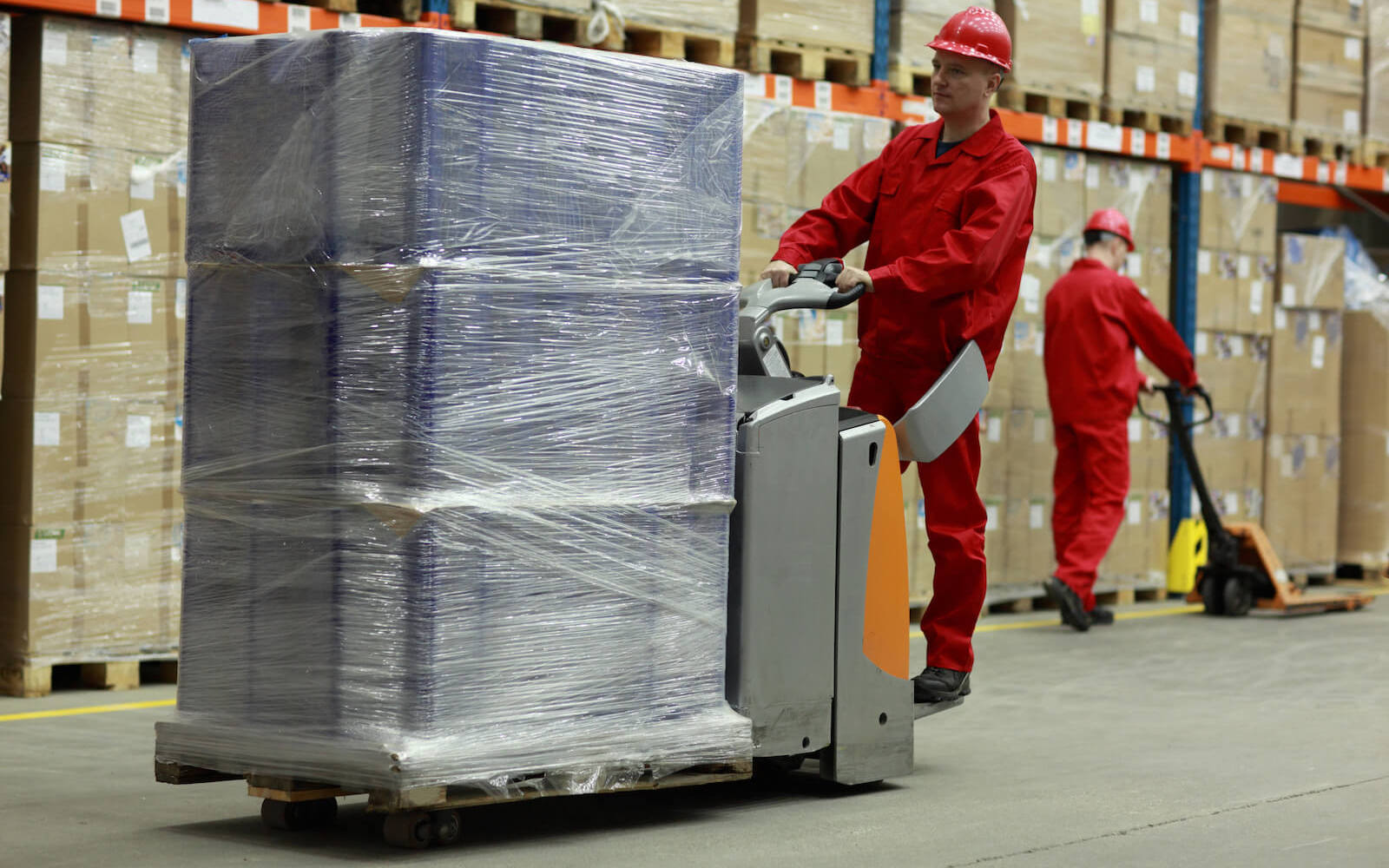Table of Contents
** Minutes
How do you calculate cost per order (CPO)?
Want to reduce CPO? Start here
4 more ways to decrease your cost per order
One major benefit of running an ecommerce business is that profit margins can be higher than traditional retail since you don’t have to lease expensive retail locations. This allows you to offer high-quality products at an affordable price.
But even with the lower costs associated with launching an online store, there are hidden costs to selling a product online that you may not be aware of. With so many different factors like marketing, fulfilment costs, shipping costs, and more, how can an ecommerce store accurately calculate how much profit they’re making per order?
In this guide, we’ll go over how to calculate the true costs that comes with a single customer order, how to decrease those costs, and how partnering with a 3PL can help improve your bottom line.
What is cost per order?
Cost per order (CPO) is the total calculated cost that is incurred by a customer making a purchase and determines profit made from a single order.
Common overlooked order costs
When calculating order costs, ecommerce businesses typically account for the cost of goods sold (COGS), shipping costs, storage costs, and more. While they are necessary costs to calculate, there are also additional costs that you need to incorporate.
Marketing/advertising costs
Also known as your customer acquisition cost (CAC), this is how much money you spend on marketing and ads to get customers to make a purchase. Unsurprisingly, it’s one of the most important ecommerce metrics to track.
CAC includes what you pay for online marketing campaigns, social ads, and costs from other marketing channels. By tracking this metric, you can make better decisions on how much you’re spending upfront to increase conversions.
For example, if you spend $100 to get one customer, and your average order value is $80, you’re losing $20 on each sale — and that doesn’t even include the logistics costs associated with fulfiling the order.
Custom packaging
Depending on the type of packaging you’re using, costs can quickly ramp up. Branded, custom packaging can make a huge impact on the unboxing experience, and it makes sense for high-quality, luxury products. But if it’s not cost-effective, it can become an unnecessary expense if you’re selling a low-cost item.
In general, packaging shouldn’t cost any more than 5% of your average order value.
How do you calculate cost per order (CPO)?
Calculating your cost per order includes everything from customer acquisition costs to fulfilment and shipping costs. To calculate cost per order, you first need to add up all of your order expenses — everything you spend to acquire, fulfil, package, and ship orders — for a set period of time. Then, you divide your order expenses by the total number of orders you received during the same timeframe.
The cost per order formula
(Customer acquisition costs + packaging costs + fulfilment costs + shipping costs + COGS + storage costs in a time period) / # of orders in that same time period.
A CPO example
Let’s look at an example of how the cost per order is calculated for a single month where you received 300 orders that each brought in $25 worth of revenue:
- Marketing/ads (CAC) – $4,000
- Packaging – $180
- Shipping costs – $900
- Fulfilment costs – $100
- Storage costs – $100
- COGS – $1,000
Total costs = $6,280
$6,280 in total costs / 300 total orders = $20.93 CPO (your cost per order)
$25 in revenue per order – $20.93 cost per order = A total profit of $4.07 per order
Want to reduce CPO? Start here
Once you have a better idea of what your average CPO is, you can make better decisions on where to cut costs to reach the amount of profit per order you desire.
High COGS (cost of goods sold)
COGS is the direct costs of producing the goods sold by a company. It’s an important metric for calculating profits because it lets you know how expensive your manufacturing costs are. If you’re seeing high COGS, have a talk with your manufacturer to see if there are ways to cut costs and production lead times.
Shipping costs
Shipping costs can add up depending on where orders are being fulfiled. For instance, if you have one storage or warehouse location in Florida, the cost of shipping the order to the other side of the country in Oregon is going to be much more expensive than shipping to a neighbouring state, Georgia.
Ecommerce businesses can reduce shipping costs by negotiating volume discounts with major shipping couriers (or work with a 3PL who can provide shipping discounts).
Storage or warehousing costs
Storing ecommerce inventory can be expensive, especially if your inventory is not being sold very quickly. For every item you have, you need storage space. If you have too many items that are unsold, you’ll have to expand your storage space to account for these costs.
4 more ways to decrease your cost per order
Reducing your cost per order can not only can help your ecommerce business be profitable, but it also results in better supply chain efficiency with opportunities to improve your warehouses, fulfilment operations, and overall ecommerce supply chain.
1. Map out your workflow
There are many unseen improvement opportunities in your retail order fulfilment processes. Work with your pickers and warehouse staff to see how you can reduce costs by improving routing, picking, inventory storage, and the other day-to-day processes throughout the order fulfilment process.
2. Process orders faster
Running a more efficient ecommerce warehouse can help reduce costs. Faster order processing means you pay less for order fulfilment because there’s less labour and time involved. For even faster order fulfilment, send orders to the warehouse closest to the customer to save on fulfilment and shipping costs.
3. Get shipping rate discounts
Shipping rate discounts are great if you can get them. If you ship in large amounts, many big couriers will give you shipping rate discounts. If you start working with a 3PL, many of them offer discounted rates due to their volume.
4. Outsource to a 3PL
More and more ecommerce businesses are seeing the benefits of outsourcing fulfilment to a 3PL. While you may think it’s cheaper and more efficient to manage fulfilment in-house, many ecommerce businesses actually grow faster while reducing costs by working with 3PLs:
“We need to deliver quickly and inexpensively. Since switching to ShipBob from our previous 3PL, our fulfilment cost on comparable orders went down by 25%.”
Michael Peters, VP of E-Commerce Operations at TB12
How ShipBob can increase revenue by optimising fulfilment
ShipBob is a 3PL used by growing ecommerce brands to handle fulfilment and warehousing.
By partnering with ShipBob, ecommerce merchants are able to turn fulfilment and warehousing into a revenue driver instead of a cost centre. Here’s how ecommerce businesses grow faster while reducing costs with ShipBob:
Fast fulfilment and shipping
One of the most appealing parts of working with a fulfilment partner is their speed to fulfil and scalability since you don’t have to do the picking and packing yourself.
Many ecommerce businesses can’t compete with Amazon’s 2-day delivery. It’s a high-converting shipping option that many ecommerce businesses wish they could have.
Shipping to a far away location increases both the cost of shipping and transit time. But setting up the logistics network capable of delivering items in two days is going to take months and cost millions of dollars. Turn to a 3PL like ShipBob, and you won’t have that problem.
“ShipBob’s 2-Day Express Shipping has been phenomenal for us. Because of Amazon, our customers expect 2-day shipping and we couldn’t find other 3PLs that can provide that. If they do, you are going to pay a lot for it. Without ShipBob, it would cost more than $100 per order to ship that fast. The cost of offering free 2-day shipping through ShipBob is more than covered and offset by all of the additional orders and revenue we’ve gotten as a result.”
Founder of My Calm Blanket
By working with ShipBob, you can offer 2-day shipping to your customers by storing inventory closest to where your customers are, and ultimately increase your average order volume.
Reduced fulfilment and shipping costs
ShipBob has a growing network of warehouses. When a customer places an order online, it’s sent to the warehouse that has your inventory that’s closest to them. This reduces your overall costs because these orders can be fulfiled quickly and the shorter distance means your overall shipping costs are lower.
“With ShipBob, we can comfortably assign a shipping cost to each order by pinpointing the product weight and destination postcode. Fulfilment by ShipBob is much easier for us to estimate because we know the true fulfilment cost.”
Greg MacDonald, CEO & Founder of Bathorium
Better inventory management
Running your own warehouses and storing inventory can be costly, complicated, and time-consuming. You also have to count inventory every day, manually reorder more inventory, and manage labour.
By working with ShipBob, we handle all of this for you. You won’t have to manage any warehouses, and inventory can be ordered easily by setting automatic reorder points. ShipBob also offers valuable fulfilment data and reporting that helps you track fulfilment performance, gain shipping insights, and reduce logistics costs.
“ShipBob’s analytics dashboard has a lot of valuable reports that show our top-selling states, order revenue and costs, units sold, sales by SKU, days of inventory, SKU velocity, sales vs. inventory distributions showing where our customers are and where we’re shipping from, and more.”
Andrew Hardy, COO of Nature’s Ultra
Conclusion
By calculating CPO, you can easily find ways to cut costs and increase profit margins. ShipBob has partnered with thousands and thousands of ecommerce businesses to help them not only grow their brand but also help in reducing shipping and fulfilment costs.
“ShipBob’s advanced software helps us quickly understand shipping costs and how to improve shipping times by being closer to where our customers are.”
Andrea Lisbona, Founder & CEO of Touchland
If you’re looking for a more robust digital fulfilment solution, ShipBob is a tech-enabled 3PL that has a network of fulfilment centre locations across Australia, Europe, and North America, and best-in-class fulfilment technology.
Learn more about how ShipBob can help you reduce costs and grow your business by filling out the form below.



